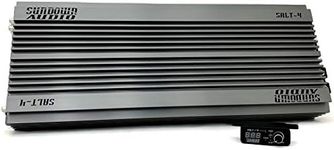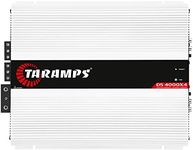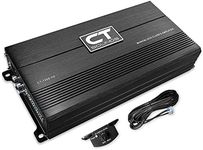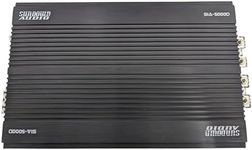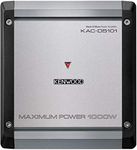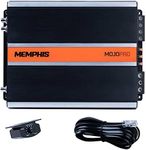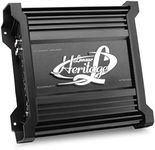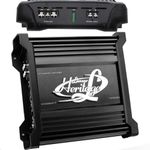Buying Guide for the Best 1000 Watt Rms Amp
Choosing the right 1000-watt RMS amplifier can significantly enhance your audio experience, whether it's for your car, home theater, or professional audio setup. The key is to understand the specifications that matter most and how they align with your needs. Here are the essential specs to consider and how to navigate them to find the best fit for you.RMS Power RatingRMS (Root Mean Square) power rating indicates the continuous power output of the amplifier. This spec is crucial because it tells you how much power the amp can consistently deliver to your speakers without distortion. For a 1000-watt RMS amp, this means it can provide 1000 watts of continuous power. If you have high-power speakers or subwoofers, a higher RMS rating ensures they receive enough power to perform optimally. Make sure the RMS rating of the amp matches or slightly exceeds the power handling capacity of your speakers.
ImpedanceImpedance, measured in ohms, refers to the resistance the amplifier will face from the speakers. This is important because matching the amp's impedance with your speakers ensures efficient power transfer and prevents damage. Amplifiers typically support different impedance levels, such as 2 ohms, 4 ohms, or 8 ohms. If you have speakers with a lower impedance (e.g., 2 ohms), the amp will need to deliver more current, which can affect performance and heat generation. Choose an amp that matches the impedance of your speakers for optimal performance.
Signal-to-Noise Ratio (SNR)The Signal-to-Noise Ratio (SNR) measures the level of the desired signal compared to the level of background noise, expressed in decibels (dB). A higher SNR means clearer sound with less background noise. For a high-quality audio experience, look for an amp with an SNR of 90 dB or higher. This is particularly important if you are using the amp in a quiet environment where background noise can be more noticeable.
Total Harmonic Distortion (THD)Total Harmonic Distortion (THD) indicates how much the amplifier distorts the audio signal, expressed as a percentage. Lower THD values mean cleaner sound. For a 1000-watt RMS amp, a THD of less than 1% is generally acceptable, but audiophiles might prefer values below 0.1% for the best sound quality. If you are very particular about audio fidelity, pay close attention to this spec.
Frequency ResponseFrequency response measures the range of frequencies the amplifier can reproduce, typically given in Hertz (Hz). A wider frequency response means the amp can handle a broader range of sounds, from deep bass to high treble. For most applications, a frequency response of 20 Hz to 20 kHz is sufficient, as this range covers the full spectrum of human hearing. If you are using the amp for specific purposes like subwoofers, you might want to focus on the lower end of the spectrum.
Input SensitivityInput sensitivity refers to the amount of input signal required to drive the amplifier to its full output. This is important for matching the amp with your audio source. If the input sensitivity is too high, you might not be able to achieve full power output. Conversely, if it's too low, you might experience distortion. Look for an amp with adjustable input sensitivity to ensure compatibility with various audio sources.
Cooling MechanismAmplifiers generate heat, especially high-power ones like a 1000-watt RMS amp. The cooling mechanism, whether it's a fan or heat sink, is crucial for maintaining performance and longevity. A good cooling system prevents overheating and ensures the amp runs efficiently. If you plan to use the amp for extended periods or in a hot environment, prioritize models with robust cooling solutions.
